By Al Hemingway
In the original 1960s Star Trek series, a Romulan commander says to James T. Kirk, captain of the starship Enterprise, “I regret that we meet in this way. You and I are of a kind. In a different reality, I could have called you friend.”
Although a sci-fi television show set in the future, the quote does illustrate a good point: enemies on the battlefield can come from vastly different backgrounds but possess the same qualities in leadership that lead them to victory in war. And, in the case of German Field Marshal Erwin Rommel and British Field Marshal Bernard Montgomery, even learn to respect one another.
In his new book, Monty and Rommel: Parallel Lives (The Overlook Press, New York, 2012, 640 pp., maps, photographs, notes, index, $35.00, hardcover), military historian Peter Caddick-Adams makes such a point when he examines the lives of Rommel, the Desert Fox, and his British counterpart, Montgomery. Both men had similarities in their upbringing, schooling, and personal lives that helped shape their strategy and bold thinking while leading their troops in battle.
Four years senior, Montgomery was born in 1887 and learned to be a good communicator largely because of his father, who was a bishop. Rommel, likewise, developed a talent for connecting with his troops because his father was a schoolteacher and eventually passed the attribute on to his son. Neither individual came from a family with a military lineage, so each had to earn the respect of their fellow officers and push themselves that much harder as they rose in rank in their respective armies.
Both excelled on the athletic field and were strong proponents of remaining physically fit throughout their careers. Sports were an avenue of acceptance among the officer corps and could certainly assist a young lieutenant in his climb up the promotional ladder.
When they received their baptism of fire in 1914 at the outset of World War I, each of them witnessed significant combat. Both were wounded while fighting in challenging terrain that earned Rommel the reputation of being a risk taker, especially when he succeeded in seizing Mount Matajur on the Austrian-Italian border in 1917 (some later claimed he overemphasized his part in the assault), a trait that he would carry with him into North Africa.
Monty served in a number of staff positions as well, honing the proficiency that he would put to use in the next world conflict. World War I had a hardening effect on both Monty and Rommel. The war took its toll on their relationships with their families as each was totally devoted to their profession and often absent from their wives and children for long periods of time. Monty became even more distant after the death of his wife, who was bitten by an insect while vacationing, eventually lost both legs, and later died in his arms.
Between the world wars, Monty learned about counterinsurgency warfare after a tour of duty in war-torn Ireland. Rommel was also busy studying and even wrote a book entitled Infantry Tactics in 1937. It was widely read by many, including Montgomery and Germany’s new leader, Adolf Hitler. Rommel’s writings soon catapulted him into the Führer’s inner circle, and by the beginning of World War II he found himself commanding a panzer division in the invasion of France in 1940. Monty was also leading an infantry division that participated in the fighting in France and, ultimately, had to retreat at Dunkirk. However, there was a difference with Monty’s men. Because they were well trained, they departed French soil in an orderly fashion.
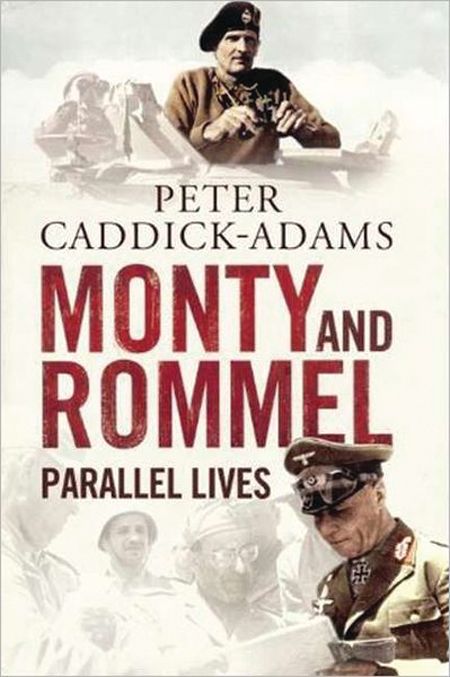
The author goes into great detail on the seesaw action in North Africa and both battles of El Alamein that resulted in the ultimate defeat of the Desert Fox. The author also focuses on the Allied assault in Normandy and subsequent combat.
Caddick-Adams has done an admirable job exploring each man’s inner feelings and writing about what made them tick as people as well as field commanders.
Both had the uncanny ability to inspire their troops. Each led by example, exposing themselves to danger and possible death on many occasions. Although imbuing their soldiers with an esprit de corps, they remained aloof and cold toward their staffs. Both spoke their minds, no matter what the consequences.
They were both naïve when it came to politics and dealing with their respective leaders. Each would disobey their superiors to do what they believed was the right thing to do.
“Thus Monty is as unlikely to have flourished in the German army as Rommel in the British,” the author writes. “They were creatures and the products of their respective societies.”
And, in the end, the irascible Montgomery would be forgiven by Prime Minister Winston Churchill. Rommel, unfortunately, was not so lucky. Hitler had him eliminated.
Rommel’s untimely death, however, may have been a blessing for him. If he had lived, and witnessed the destruction of his beloved Germany, it may have been a fate worse than death for the immortal Desert Fox.
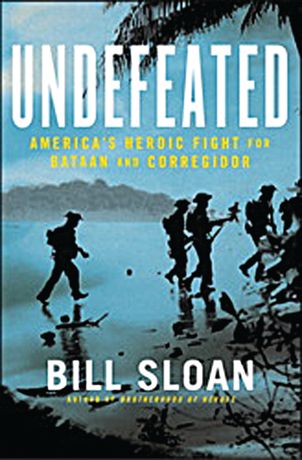 Undefeated: America’s Heroic Fight for Bataan and Corregidor by Bill Sloan, Simon & Schuster, New York, 2012, 416 pp., maps, photographs, notes, bibliography, $28.00, hardcover.
Undefeated: America’s Heroic Fight for Bataan and Corregidor by Bill Sloan, Simon & Schuster, New York, 2012, 416 pp., maps, photographs, notes, bibliography, $28.00, hardcover.
In his latest book, military historian Bill Sloan pays tribute to those individuals from all branches of the service who defended the Philippines against the Japanese during the dark, early days of the war in the Pacific. It is no secret—Sloan alludes to the fact in his account—that President Franklin Roosevelt had relegated the Pacific Theater to secondary status, shifting the priority to the fighting in the European Theater.
Sloan goes into detail on the mistakes made by the politicians and military brass in Washington. He also points out that General Douglas MacArthur, U.S. commander in the Philippines, deserves a lion’s share of the blame himself, especially during the period immediately after the attack on Pearl Harbor until Christmas Eve, 1941.
MacArthur’s inexcusable inactivity, resulting in the loss of planes and lives at Clark Field, about 60 miles north of Manila, was an unmitigated disaster. His hesitation in allowing Maj. Gen. Lewis Brereton, commander of the Far East Air Force, to order his bombers airborne to strike Japanese bases on Formosa led to the eventual destruction of the airfield and loss of life.
MacArthur’s intense hatred of the Marine Corps because of the publicity showered on the Corps during World War I would not permit him to place Colonel Samuel Howard’s battle-tested 4th Marines, who had arrived from Shanghai, China, to help against the Japanese onslaught.
Despite MacArthur’s indecision, the “Battling Bastards of Bataan” and the troops on Corregidor fought tenaciously against a numerically superior enemy equipped with better weapons and air superiority. In the end, MacArthur was ordered out of the Philippines and General Jonathan Wainwright was left holding the bag. Although Wainwright put up a spirited defense, he was forced to capitulate in May 1942.
Sloan provides graphic detail of the horrific atrocities committed against U.S. and Filipino prisoners, as well as the civilian population, during the 60-mile trek to Camp O’Donnell after their capture. The horrendous ordeal has since been called the Bataan Death March.
Amid the historical background, Sloan does a marvelous job of interjecting personal accounts of the survivors, many of whom he interviewed personally. Sloan has penned a great book that is a must-read for all World War II Pacific history buffs.
 The Battle of the Tanks: Kursk, 1943 by Lloyd Clark, Atlantic Monthly Press, New York, 2011, 468 pp., maps, photographs, notes, index, $30.00, hardcover.
The Battle of the Tanks: Kursk, 1943 by Lloyd Clark, Atlantic Monthly Press, New York, 2011, 468 pp., maps, photographs, notes, index, $30.00, hardcover.
Although the Battle of Kursk, about 300 miles south of Moscow, was the largest tank and infantry battle in the history of warfare, it has received limited attention from Western military historians. When Hitler launched Operation Barbarossa, the invasion of the Soviet Union, in 1941, his blitzkrieg poured through the Red Army defenses, sending them reeling in retreat.
By the summer of 1943, however, the Germans had failed to capture Moscow and suffered a staggering defeat at Stalingrad. As the Wehrmacht withdrew westward, a great salient, or bulge, developed in the Soviet lines. This bulge was centered in the area of Kursk, and Hitler was determined to eliminate it.
The scale of the combat at Kursk was massive with the opposing armies fielding about four million men between them, as well as 69,000 artillery pieces and mortars, 13,000 tanks and self-propelled guns, and nearly 12,000 aircraft.
The Red Army had reaped benefits since its initial clashes with German forces. In July 1943, when the Germans initiated their effort to eliminate the Kurst salient with Operation Citadel, the Soviets had substantially recovered from their losses early in the war, and the German effort was eventually defeated.
In terms of casualties, the Russians bore the brunt with more than 860,000 dead, wounded, and missing. During the months of July and August, German casualties were 500,000.
Clark’s book rings with an authentic feel when he writes about the fighting and the leaders, possibly because he actually walked the battlefield and spoke to survivors. In doing so, he has given the reader an excellent account of the Kursk operation.
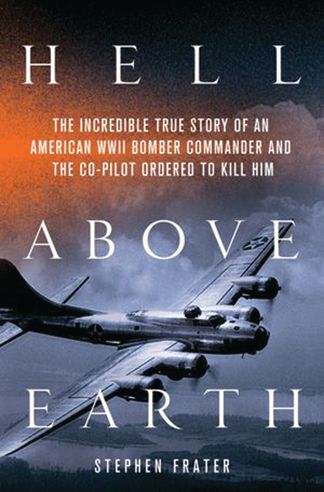 Hell Above Earth: The Incredible True Story of an American WWII Bomber Commander and the Co-pilot Ordered to Kill Him by Stephen Frater, St. Martin’s Press, New York, 2012, 320 pp., photographs, bibliography, notes, $25.99, hardcover.
Hell Above Earth: The Incredible True Story of an American WWII Bomber Commander and the Co-pilot Ordered to Kill Him by Stephen Frater, St. Martin’s Press, New York, 2012, 320 pp., photographs, bibliography, notes, $25.99, hardcover.
Although Captain Werner Goering was an exceptional U.S. pilot and was patriotic and believed in destroying the Nazis who were ravaging Europe, he did have one thing against him—he was the nephew of Hermann Göring —chief of the German Luftwaffe.
Werner’s father had immigrated to the United States immediately following World War I and settled in Salt Lake City, Utah. At first the family was extremely proud of their relative’s meteoric rise to leadership in the German government. However, when Germany invaded Poland in 1939 and Hitler’s true intentions were discovered, Werner’s family and the German-American community as a whole were ashamed.
Eager to fight for America, Werner Goering became a B-17 bomber pilot, flying numerous missions over Germany. He even took part in a raid over Cologne, where his relatives resided.
What Goering did not know was that the FBI was closely watching him because of his ties to his infamous uncle. What he also did not know was that the FBI had ordered his co-pilot, Jack Rencher, to kill him if he attempted to defect to the other side.
Hell Above Earth is a riveting tale that will keep readers on the edge of their seats. It not only tells of the dangerous missions that bomber pilots and crews had to endure, but has an added twist of mystery and intrigue.
 Shadow Commander: The Epic Story of Donald D. Blackburn, Guerilla Leader and Special Forces Hero by Mike Guardia, Casemate Publishers, Havertown, PA, 2011, 216 pp., maps, photographs, bibliography, index, $32.95, hardcover.
Shadow Commander: The Epic Story of Donald D. Blackburn, Guerilla Leader and Special Forces Hero by Mike Guardia, Casemate Publishers, Havertown, PA, 2011, 216 pp., maps, photographs, bibliography, index, $32.95, hardcover.
The name Donald Blackburn should be prominent in any discussions about the history of the U.S. Army Special Forces. As a young lieutenant stationed in the Philippines in World War II, the Florida native successfully escaped the Japanese when Bataan fell and, with fellow Special Forces legend Russell Volckmann, made his way deep into the fetid jungles of northern Luzon to continue the fight against the enemy by conducting a guerrilla war.
The Japanese, however, were not the only enemies that he had to contend with. Malaria and the questionable allegiance of the indigenous tribes were further obstacles he had to overcome. Together, the two organized an effective fighting force that harassed the Japanese until the Allied invasion of October 1944. Soon, the young lieutenant had about 5,000 under his command and the unit became known as Blackburn’s Headhunters. Because of his enormous success, Blackburn rose to the rank of colonel at just 29—the youngest colonel in U.S. Army history.
The author, who also wrote a great biography of Volckmann, follows Blackburn’s career into the early stages of the Vietnam War in the 1950s and his part in planning the ill-fated Son Tay Raid in North Vietnam in 1970.
In this absorbing, well-written book, Guardia gives long overdue recognition to a true hero and pioneer of the Army’s Special Forces.
 Women Wartime Spies by Ann Kramer, Pen & Sword, South Yorkshire, Great Britain, 2011, 160 pp., photographs, index, $39.95, hardcover.
Women Wartime Spies by Ann Kramer, Pen & Sword, South Yorkshire, Great Britain, 2011, 160 pp., photographs, index, $39.95, hardcover.
Although the first few chapters of this book deal exclusively with female spies during World War I, the majority of it focuses on women who ventured into occupied countries, especially France, during World War II. Many of these brave ladies were captured, tortured, and executed, but not before they had performed remarkable duty behind the lines to help the Allied effort.
During the war, approximately 3,000 women were part of the British Special Operations Executive and recruited from the Female Aid Nursing Yeomanry, a “fiercely independent all-woman organization.”
Kramer gives a good background of the training and duties of the field agents. She also gives biographical sketches of some of the better known female operatives, whom she describes as “committed, idealistic, thoughtful, patriotic, and brave.”
This is a must-read that deals with the heroic women who risked their lives in Nazi-occupied territory, performing dangerous clandestine operations to help defeat fascism in World War II.
Short Bursts
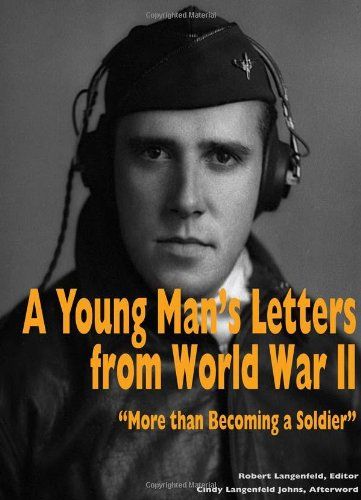 A Young Man’s Letters from World War II: “More Than Becoming a Soldier” edited by Robert Langenfeld, ELT Press, Greensboro, NC, 2011, 234 pp., photographs, $20.00, hardcover.
A Young Man’s Letters from World War II: “More Than Becoming a Soldier” edited by Robert Langenfeld, ELT Press, Greensboro, NC, 2011, 234 pp., photographs, $20.00, hardcover.
Nothing brings home the boredom, frustration, and horror of war like letters from a serviceman to his family and friends. They tell the personal side of the conflict, everything from the mundane to the terrifying experiences each person encountered.
A Young Man’s Letters tells the story of Lieutenant Robert E. Langenfeld, the pilot of a B-24 Liberator bomber in the Eighth Air Force stationed in England during World War II. The letters, edited by his son, trace the elder Langenfeld’s journey from raw recruit at Jefferson Barracks, Missouri, to his pilot training and eventually his overseas duty.
Langenfeld’s account of his missions over Germany depicts the realism of the conflict. He wrote about a mission on March 25, 1945, during which his aircraft flew at low altitude delivering supplies to Allied forces, describing it as “everyone for himself” after the supplies were dropped.
“You could see everything,” he wrote. “Germans surrendering, dead on the ground. We were right in the thick of the battle. We got several holes in our ship from German infantrymen’s rifles. Once again we were lucky. None of my crew was wounded, though our losses were fairly heavy.”
For those with an interest in the air war over Germany through the eyes of someone who was there, this book would make a good addition to any home library.
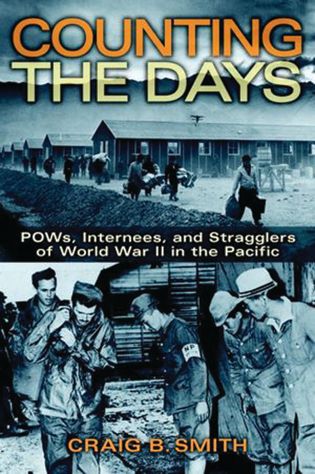 Counting the Days: POWs, Internees, and the Stragglers of World War II in the Pacific by Craig B. Smith, Smithsonian Books, Washington, DC, 2012, 264 pp., maps, photographs, bibliography, notes, $27.95, hardcover.
Counting the Days: POWs, Internees, and the Stragglers of World War II in the Pacific by Craig B. Smith, Smithsonian Books, Washington, DC, 2012, 264 pp., maps, photographs, bibliography, notes, $27.95, hardcover.
The author traveled the world to gain a sense of what POWs on both sides of the war in the Pacific had to endure just to survive their horrifying ordeal. Those who have read of the harsh treatment of Allied prisoners by the Japanese know how cruel they were. Smith, however, has also recorded acts of incredible bravery and compassion in his book.
There is an interesting account of an American couple who resided in the Philippines and fled into the jungle when the Japanese invaded the islands. Their tale is incredible indeed; they faced danger, starvation, and possible capture as they eluded the enemy.
Another section deals with the internment of Japanese-Americans, most of whom were U.S. citizens, by the Roosevelt administration when the war broke out. Although they were not mistreated, they were still imprisoned, said one of the internees at Manzanar in California. Today, ironically, the Manzanar site has been preserved by the National Park Service and is a tourist attraction.
This is a well-researched book depicting the hardships of people, both civilian and military, on both sides who want no pity and “most defiantly, want no sympathy. They are the survivors.”
 Steel Cavalry: The 8th (New Brunswick) Hussars and the Italian Campaign by Lee Windsor, Goose Lane Editions, Fredericton, New Brunswick, Canada, 2011, 199 pp., maps, photographs, index, $18.95, softcover.
Steel Cavalry: The 8th (New Brunswick) Hussars and the Italian Campaign by Lee Windsor, Goose Lane Editions, Fredericton, New Brunswick, Canada, 2011, 199 pp., maps, photographs, index, $18.95, softcover.
Lee Windsor, a former member of the regiment, has done a superlative job of tracing the lineage of the 8th New Brunswick Hussars during the fighting at Cassino, the Liri Valley, Metfa Crossing, the Ceprano, and a host of other battles in World War II.
Trading in their mounts for tanks, the unit saw its baptism of fire at Ortona, after its initial landing at Naples in late 1943. It was not long before the 8th Hussars were in the thick of the fighting as they rolled up the Liri Valley. On a single day in May 1944, the regiment destroyed or seized 11 enemy antitank guns, two self-propelled howitzers, six gun tractors, one 105mm artillery piece, numerous machine guns, and one Panther tank.
“Following the path the Hussars took to Coriano, then, will add much to our knowledge of the men New Brunswick, and Canada, sent off to win the Second World War,” he writes.
The Thirsty 13th: The U.S. Army Air Forces 13th Troop Carrier Squadron, 1940-1945, New Caledonia-New Hebrides–Biak–Leyte by Seth P. Washburne, Thirsty 13th LLC, 2011, 800 pp., photographs, index, $125, hardcover.
The 13th Troop Transport Squadron, nicknamed the “Thirsty 13th,” had the distinction of being the first such unit stationed in the South Pacific in the early phases of World War II. The pilots wasted no time and swung into action supporting the Marines who were fighting desperately on Guadalcanal in the Solomons. Their aircraft lifted off in the wee hours of the morning and flew nearly 800 miles before reaching their destination, delivering much-needed supplies to the beleaguered leathernecks.
The author interviewed 73 crew members, who told their stories for the book. The squadron carried everything from oil to gasoline, bombs, and ammunition, and even evacuated wounded. For their dedication, the 13th received two Presidential Unit Citations and seven battle stars.
The coffee table-sized book is chock full of personal photographs taken by the crew members during their three-year stint in the Pacific. It is not only a great tribute to the 13th but also to all the troop carrier squadrons who risked their lives to deliver essential supplies to the infantrymen on the front lines.
Images of War: British Tanks, The Second World War, Rare Photographs from Wartime Archives by Pat Ware, Pen & Sword Books, South Yorkshire, England, 2011, 144 pp., diagrams, photographs, $24.95, softcover.
Historian Pat Ware, an expert on military vehicles, has written a well-researched book about the history and development of the British tank during World War II. From the outset of the conflict in 1939 until its completion in 1945, the Brits studied nearly two dozen tank designs. One company, Vickers-Armstrong, contributed 25 percent of the tracked vehicles produced for the war effort, including the popular Valentine model.
The book offers great illustrations depicting the history of the tank design and development from the British point of view.
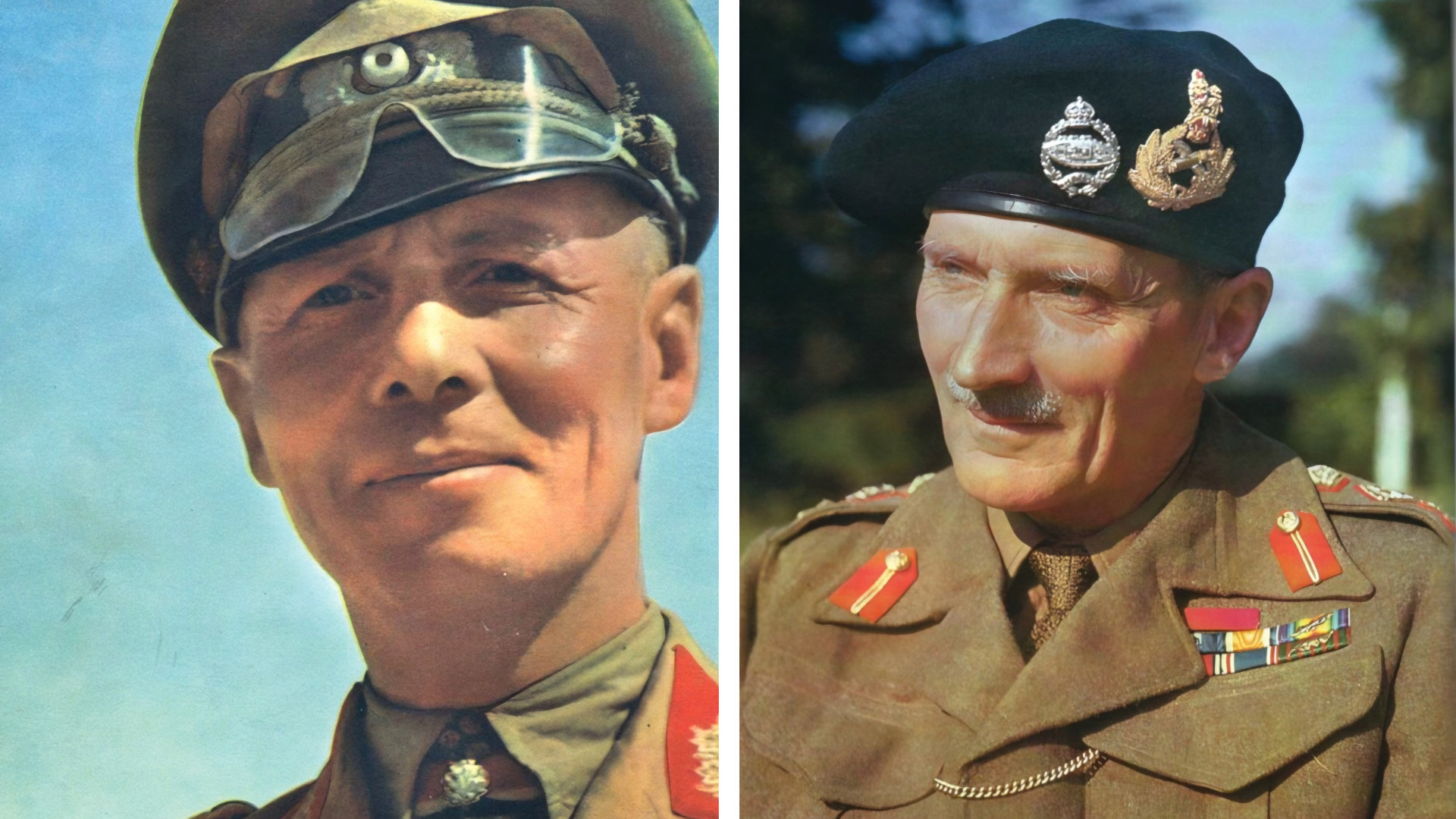
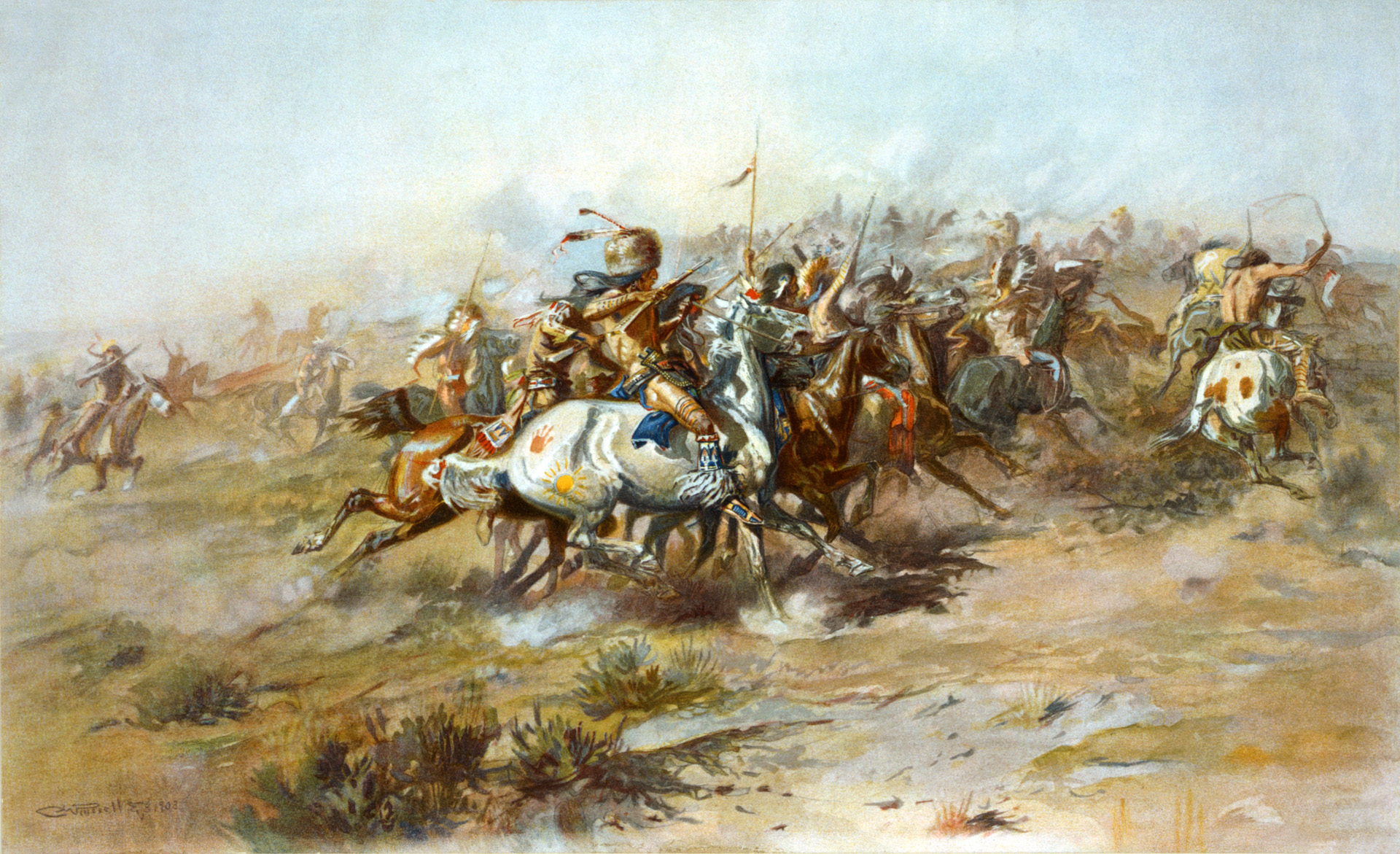
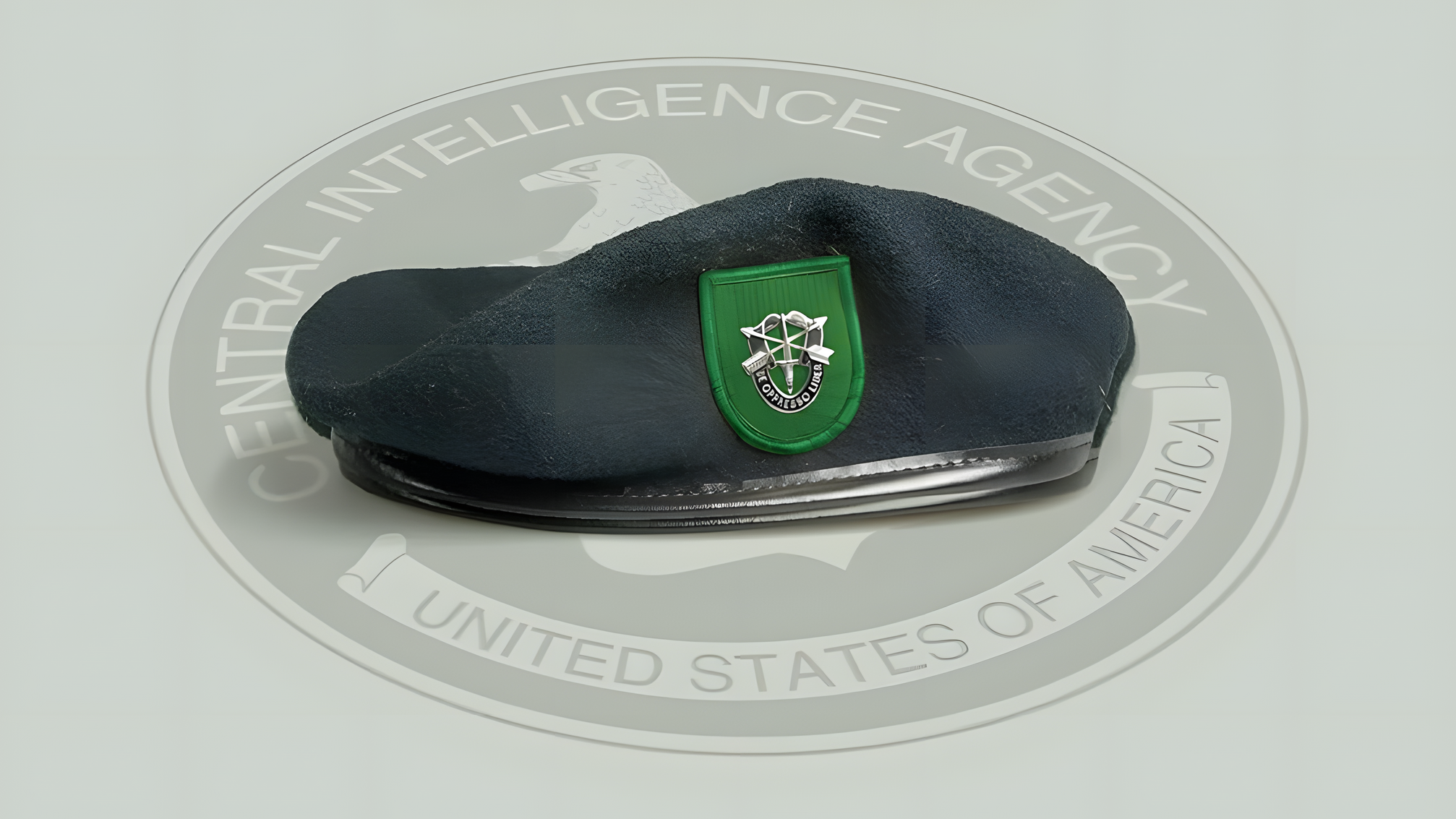
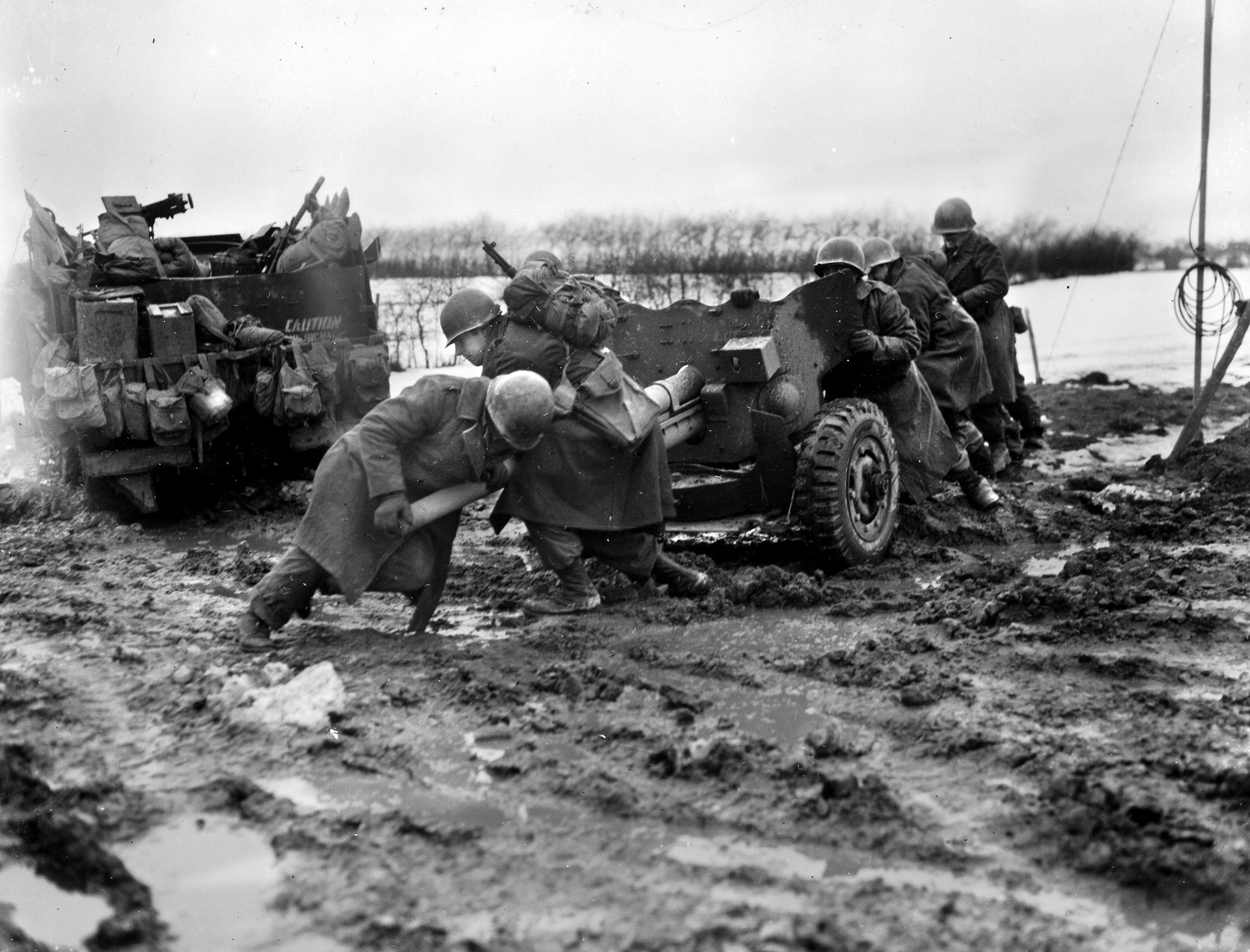
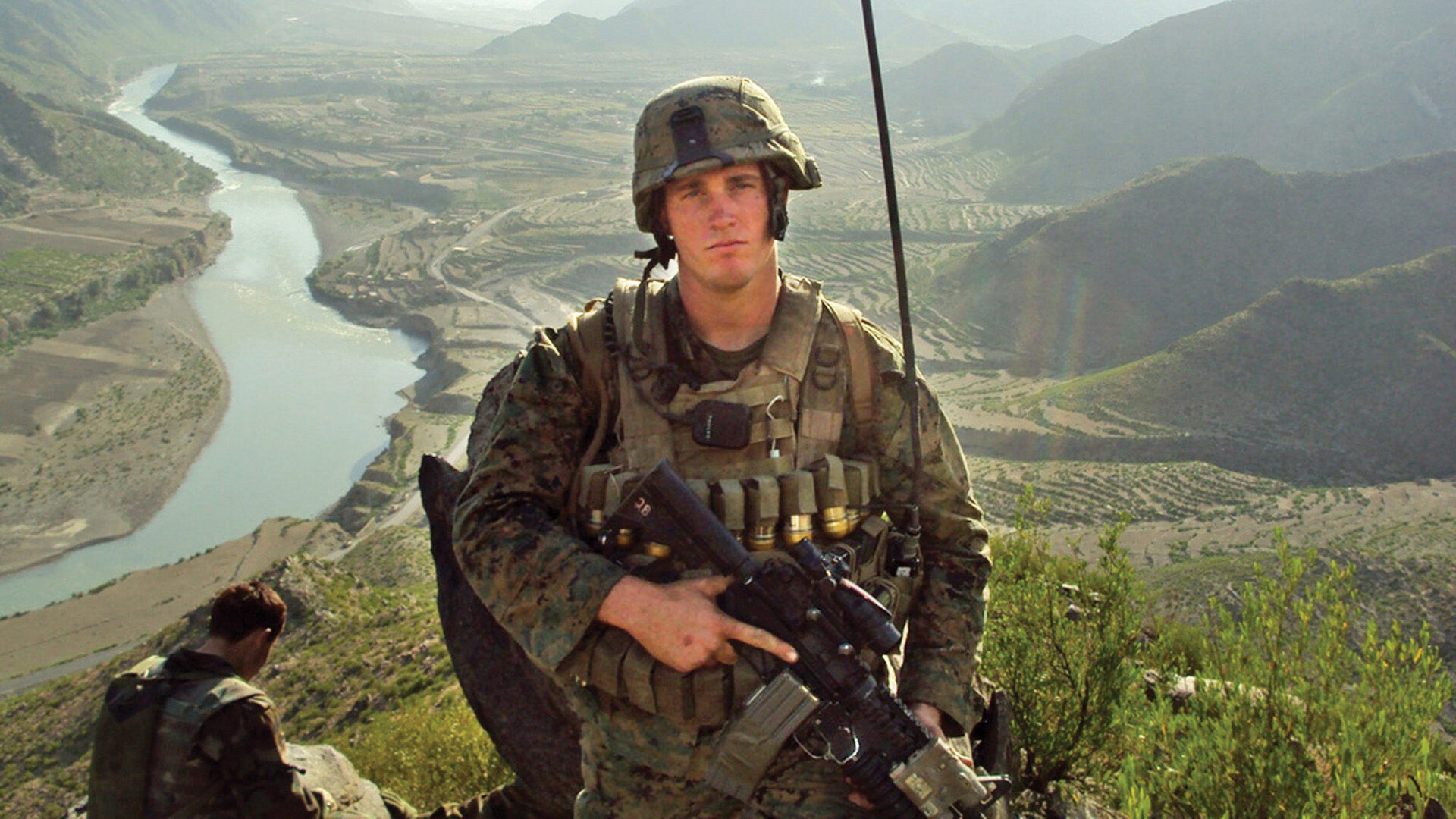
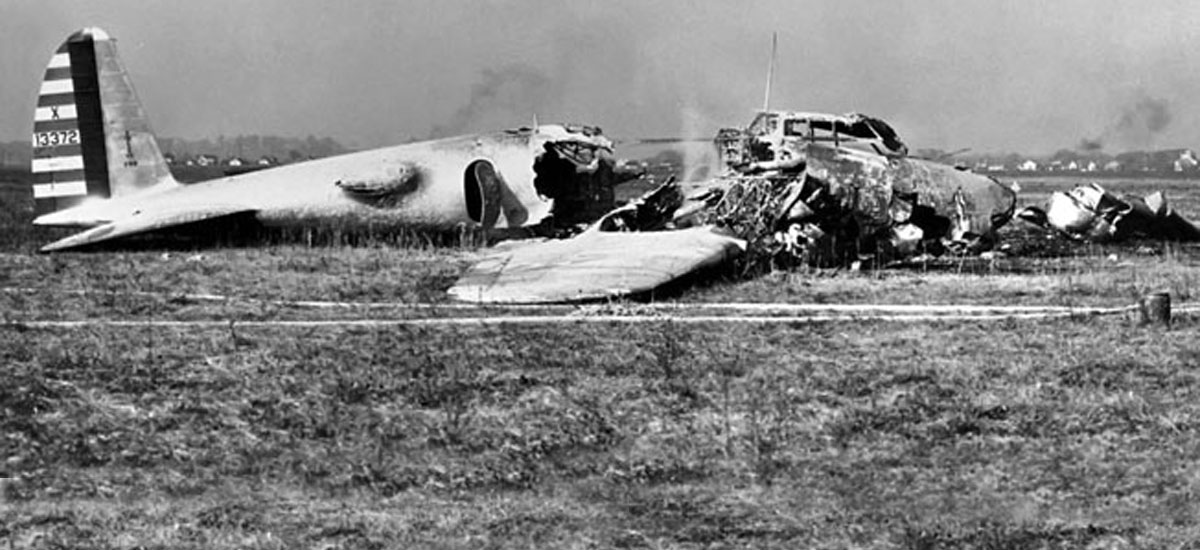
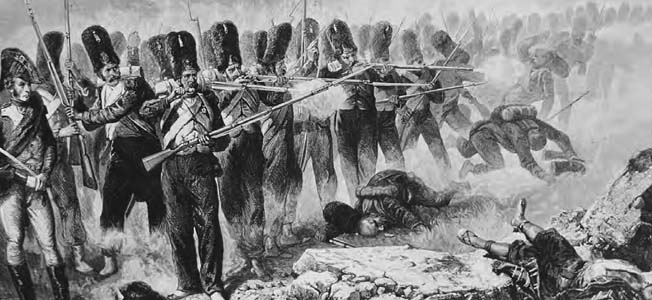
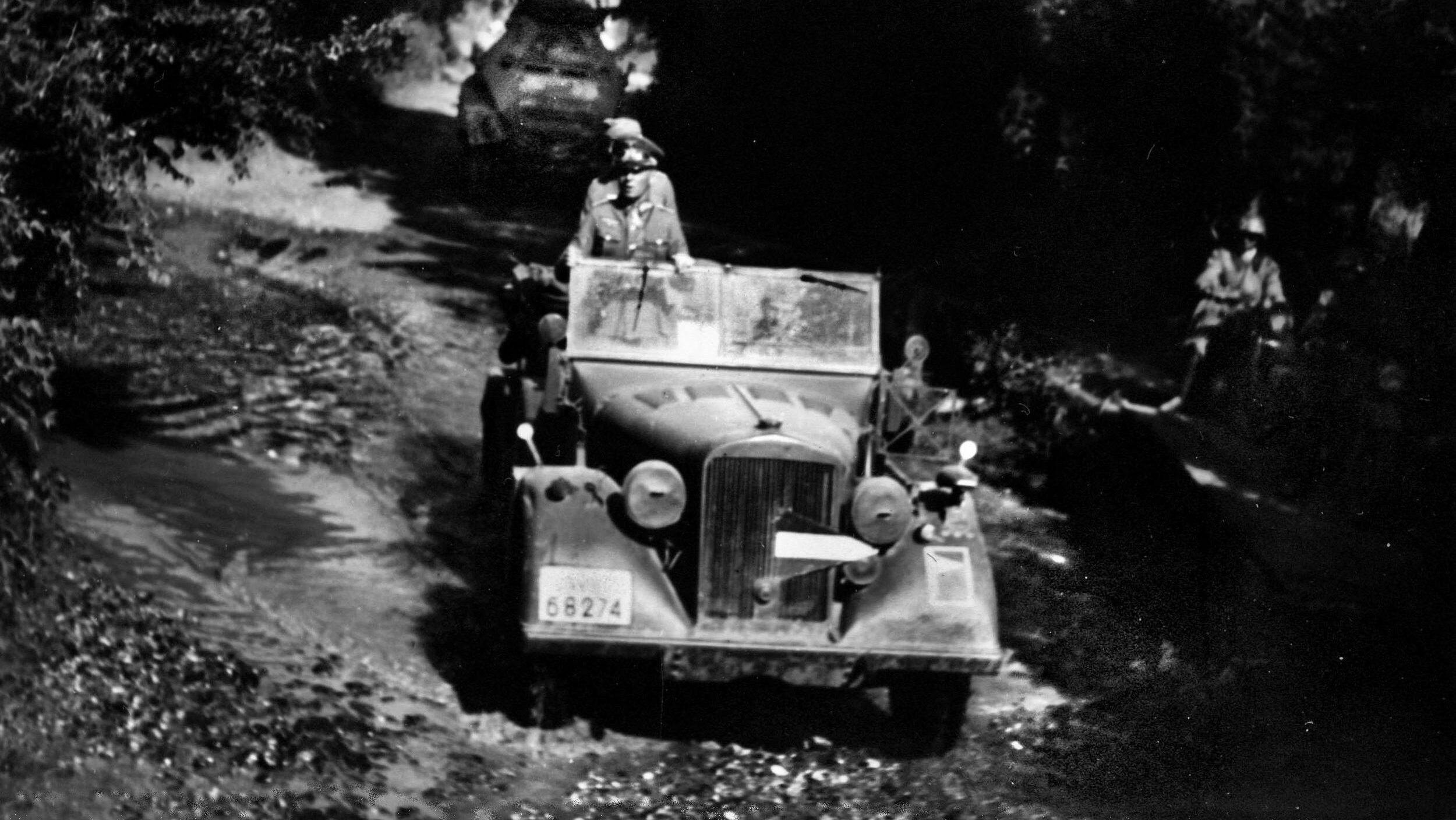

Join The Conversation
Comments
View All Comments